Considered as one of the most advanced countries in terms of music, art, and aesthetics, Mexico has something more to boast of. It is the land where some of the most exquisite floral beauties thrive. Take a look at some of the most popular flowers from Mexico.
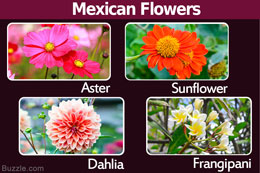
Mighty!Dahlia, which is the national flower of Mexico, belongs to the Asteraceae family, which is amongst the top three largest families of flowering plants. The other two are Orchidaceae and Fabaceae.Mexico has cropped up as one of the budding flower-producing nations of the world. The land is bestowed with diverse favoring conditions that prompt the growth of multiple flowers throughout the country, facilitating floriculture as an industry. It also boasts of an exquisite flora, which is grouped as tropical, desert, and temperate flowers. Most flowers are commercially available, both, for the domestic market as well as for export. The varieties of flowers produced are multiple, which cater to the food and cosmetic industry, not forgetting the ones which are meant for ornamental decoration and gardening.
Mexicans have a special affinity with flowers. Mexican mythology associates several deities with flowers. Almost every household has a garden of their own. During festivities and rituals, flowers form the key resource of celebration. Such is the love for flowers amongst them. Over here, we shall look into some of the most famous types of Mexican flowers, with a brief description about each.Native Mexican Flowers
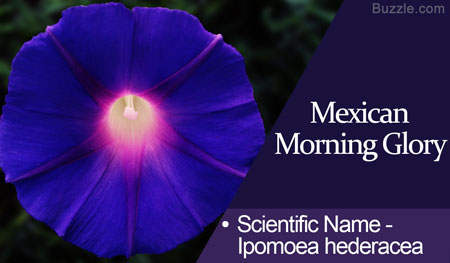
-Family- Convolvulaceae
-Genus- Ipomoea
-Common Name- Ivyleaf Morning Glory, Wooly Leaf Morning Glory, Water Spinach
-Appearance- They come in a variety of colors, some of the most common ones are, blue, white, and purple.
-Location- The plant is originally from the tropical region of America, and is found in dry locations.Quick Fact- This flower is native to the tropics, and was used extensively by the Aztec tribe of Mexico. They grow after the rains, and bloom in summers and fall. They are categorized as shrubs. The flower opens up only during the mornings. It is grown as an ornamental plant, given the unique shape of its petals, which resemble a trumpet. It symbolizes unfulfilled love.
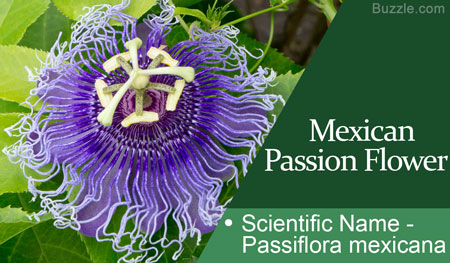
-Family- Passifloraceae
-Genus- Passiflora
-Common Name- Passion Vine, May Apple
-Appearance- They are vine and shrub plants. The flowers are an exquisite combination of green and red, or yellow and purple.
-Location- They tend to grow in dry areas, underneath larger trees.Quick Fact- These tend to grow heavily in the month of September. It's ideal growing time is in the summer, and it doesn't grow during the fall. They attract of caterpillars, butterflies, and bees. They have a pungent odor, and bear the famous passion fruit. The flower is a sure cure for nervousness. It grows in South and Central America, and in the US. The Aztec people used it to treat insomnia. This flower is also deeply related to the Passion of Lord Christ.
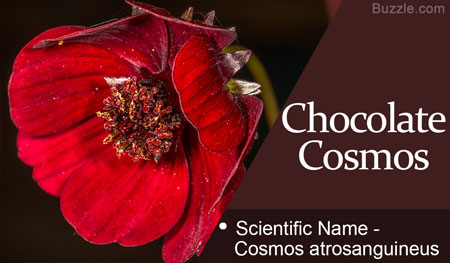
-Family- Asteraceae
-Genus- Cosmos
-Common Name- Chocolate Cosmos, Black Cosmos, Black Dahlia, Chocamocha
-Appearance- The flower is a member of the cosmos family, with a hue of dark red to maroon, or brown. Hence the name, Chocolate Cosmos.
-Location- It originated in Mexico, and was later introduced in many parts of Europe.Quick Fact- Mexico is the land of this cosmos variety, though It is now believed to be extinct in many parts. An interesting point to note here is that, the flower emanates a scent of chocolate or vanilla. It grows well throughout the summer season, and is a beautiful ornamental plant. Ironically, despite the alluring smell of cocoa, this flower is certainly unsuitable for consumption. It is considered to be one of the best cutting flowers.
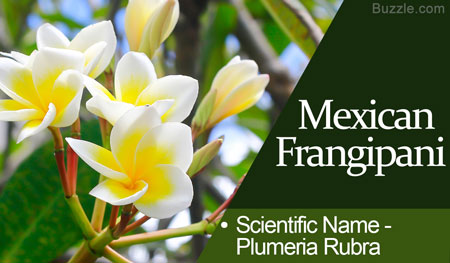
-Family- Apocynaceae
-Genus- Plumeria
-Common Name- Yasmin, Plumeris, Champa, Aralia, Melia, Kamboja
-Appearance- It has tiny, white and yellow flowers.
-Location- Mexico, European nations, India, Sri Lanka, Thailand, Indonesia, Caribbean, Central America, BrazilQuick Fact- Have you admired those tiny blooms in glass bowls during your sessions at the spa? Well, those are the marvelous Frangipani. But it can kindle some kind of irritation to the skin and the eyes, to some. One of the most attractive choices of moths, this flower emits a pleasant smell at night. The flower is famous in many places, including Europe, where it was used as a perfume making substance. It is believed in many countries that ghosts seek a habitat in the trees of Frangipani. It is used extensively in incense and offerings in rituals and rites.
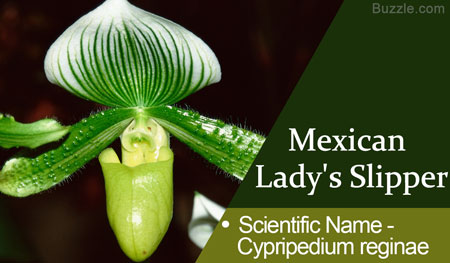
Family- Orchidaceae
-Genus- Cypripedium
-Common Name- Queens's Lady's Slipper, Slipper Orchid, Venus' Shoes
-Appearance- It looks very interesting and depicts the shape of a shoe on a pouch. These come in colors of pink, green, and white.
-Location- Oaxaca in Mexico, Canada, US
Quick Fact- This beautiful flower is known to cause some skin maladies. However, the allergen was later developed from the flowers to produce a remedy for dermatitis.
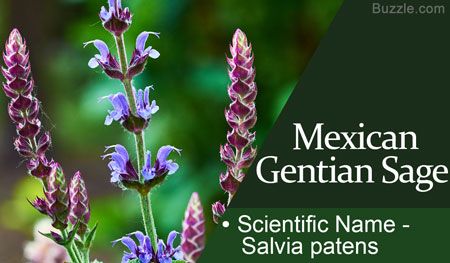
-Family- Lamiaceae
-Genus- Salvia
-Common Name- Blue Angel, Gentian Sage, Spreading Sage
-Appearance- One of the richest shades of blue decors this double-lipped flower, in contrast to the chirpy green foliage.
-Location- Originated in Central MexicoQuick Fact- This flower was discovered in one of the expeditions to find out the unique flowers of Mexico, way back in 1836. Apart from this rich-blue shade, many cultivators have in their account some shades of whites, light blues, and pinks. The flower is most visited by hummingbirds. So, if you happen to have them in your garden, you will be lucky to have glimpses of these birds too.
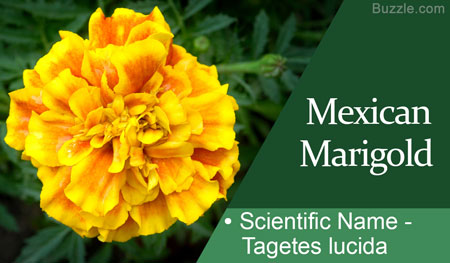
-Family- Asteraceae
-Genus- Tagetes
-Common Name- Mary's Gold, Flowers of the Dead
-Appearance- These warm-colored flowers are the members of the daisy family. Their ravaging colors are the attraction they cast on people. The colors are varied. They usually come in yellow, orange, and maroon shades.
-Location- Native to southwest US, and Mexico.Quick Fact- Garlands of Marigold are an integral celebratory resource in most countries and cultures. They are believed to be one of the purest offerings that can be offered to deities. They are also used as food dyes. There is an association of the name with Mother Mary, from where it begot its name. Day of the Death celebration in Mexico is rendered incomplete without this flower.
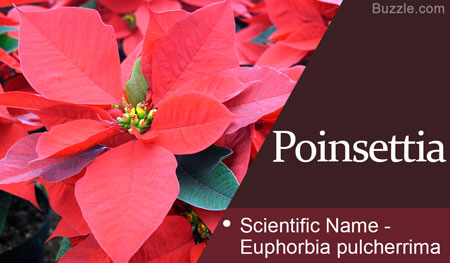
-Family- Euphorbiaceae
-Genus- Euphorbia
-Common Name- Christmas Eve Flower, Pascua, Ester Flower
-Appearance- This flower is borne by a small shrub. The colorful clusters of leaf-like petals can be found in multiple colors of red, orange, cream, green, and pink.
-Location- Mexico, Spain, Central America, AsiaQuick Fact- These assumed colorful flowers are in fact not flowers. They are the colorful foliage of the plant. The Aztecs of Mexico used them in the manufacture of dyes, and also in medicinal requirements. The 'star' shape florets resemble the Star of Bethlehem, and the Mexicans began to associate this with the celebration of Christ's birthday.

-Family- Asteraceae
-Genus- Dahlia
-Common Name- Most commonly known as Dahlia
-Appearance- This is a relatively big flower, with a display of varied colors. Some are even bi-colored.
-Location- Indigenous to Mexico, Central and South America, ColumbiaQuick Fact- This is the national flower of Mexico. The wonderful petals are also used in salads. Mexico has been famous as a flower-loving nation since ages, and Dahlia is one of the many varieties of colorful blossoms that found its place in Mexican gardens. It is extensively cultivated because of its sheer beauty, resulting in multiple hybrids all over the globe.
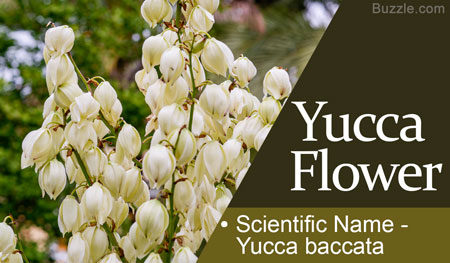
-Family- Asparagaceae
-Genus- Yucca
-Common Name- Yucca, Soap Tree
-Appearance- It is a succulent that bears flowers which are pleasant to smell, mostly white.
-Location- Mexico, US, Columbia, California, Sonora
Quick Fact- It got its name from the banana-shape fruits that it bears. It is used in the formation of herbal drugs as well as cosmetics. This is the state flower of New Mexico.
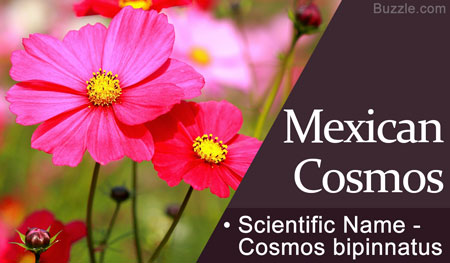
-Family- Asteraceae, Compositae
-Genus- Cosmos
-Common Name- Mexican Aster, Sonata White
-Appearance- The flowers are disc-shaped. They are extremely lightweight, and are a great sight to watch when they sway gracefully in the breeze.
-Location- Native to Mexico, and also found in the USQuick Facts- The light flowers stand on the slender stems of the plant. They are used as flower cuttings. They are excellent as border fillers and beds. These are amongst the top choices for gardeners using ornamental flowers.
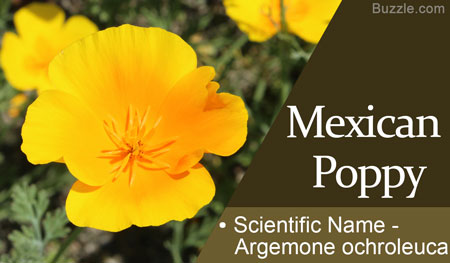
-Family- Papaveraceae
-Genus- Argemone
-Common Name- Mexican Poppy, Prickly Poppy, Mexican Thistle, Devil's Fig
-Appearance- They are yellow, white, and cream colored.
-Location- Mexico and tropical America, Asia, Australia, Africa
Quick Fact- This plant was used by the natives of Mexico and America. It is known for its medicinal advantages.

-Family- Asteraceae
-Genus- Tithonia
-Common Name- Mexican Sunflower, Japanese Sunflower, Nitobe Chrysanthemum
-Appearance- It has a composite structure, and comes in shades of red and yellow, primarily.
-Location- Originally from Mexico. Spread to Central and South America, Europe, Asia, Africa.Quick Fact- This is one of the substitutes for synthetic fertilizers. It is found to be an invasive weed. It is also one of the measures taken to prevent soil erosion. It is used mostly for its ornamental purpose. This flower can grow in poor conditions, serves as a great cut flower, and is an attraction for butterflies.
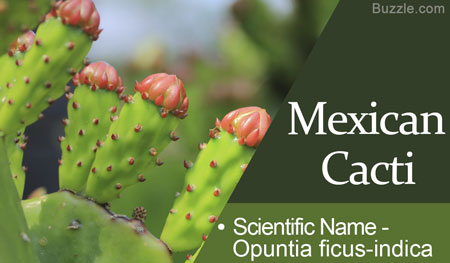
-Family- Cactaceae
-Genus- Opuntia
-Common Name- Prickly Pear Tree
-Appearance - Succulent with pricks.
-Location- Mexico, Caribbean, US
Quick Fact- The fruits are edible. They are also used to treat psychological conditions. They find extensive use as ornamental plants.
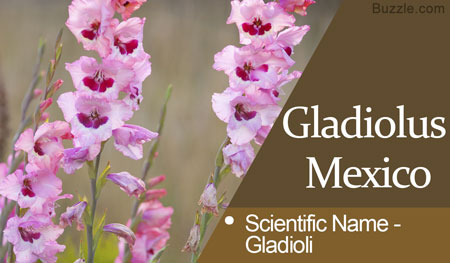
-Family- Iridaceae
-Genus- Gladiolus
-Common Name- Sword Lily, Gladioli, Gladioli Corms
-Appearance- These are shaped like small swords. They have multiple color variations, like red, dark red, peach, pink, and yellow.
-Location- South Africa, MexicoQuick Fact- These are large flower types, and they do well as vase decorations, bouquets, and borders for gardens. They are effective for flower arrangements for exhibitions and other similar occasions. The flower denotes sympathy and memories, and is therefore used in celebrating Day of the Dead. These were also given to the victorious gladiators because of their shape of a sword.
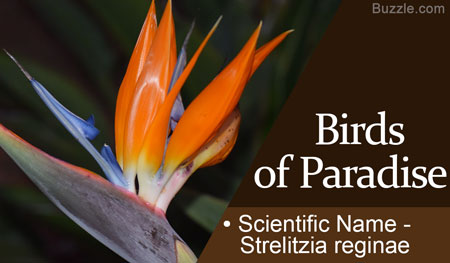
-Family- Asteraceae
-Genus- Ratibida
-Common Name- Mexican Hat, Clone Flower, Upright Prairie, Thimble Flower
- Appearance- These are colorful flowers which rest on long leafless stalks. The color variations are of red and yellow shades. They are found as single-colored or bi-colored. The cones, which are set upon the petals, are more often black or dark shades of brown.
-Location- Mexico, CanadaQuick Fact- The plant is a source of tea, and a medicine for aches and pains. Given its unusual beauty, the flowers serve for ornamental purposes.

-Family- Strelitziaceae
-Genus- Strelitzia
-Common Name- Birds of Paradise, Crane Flower, Strelitzia
-Appearance- The flowers grow atop a base upon the stalk, appearing like a plume. This resembles the head of a plumed bird.
-Location- Mexico, South Africa, Chile, Bangladesh, California
Quick Fact- This is the official flower of California. It is native to South America, and there it is popularly known as the Crane Flower. These denote magnanimity, grandeur, beauty, and excellence.

-Family- Acanthaceae
-Genus- Justicia
-Common Name- Mexican Honeysuckle, Desert Honeysuckle
-Appearance- Small slender flowers, which are orange in color.
-Location- Mexico, Florida, HawaiiQuick Fact- These make good garden flowers. Some varieties are pleasant smelling. The flowers are bright-orange in color, and are one of the top attractions for wildlife. It bears a strong resemblance with Lonicera, and grows in spring. It has a deep shade of orange.

-Family- Cactaceae
-Genus- Hylocereus
-Common Name- Dragon Fruit Flower, Jesus in the Cradle, Belly of the Night, Cinderella Plant
-Appearance- The flowers are white in color, with a large size.
-Location- Mexico, Central AmericaQuick Fact- This is an ornamental flower plant, because of its exceedingly beautiful flowers and equally beautiful fruits. This makes it both an ornamental plant as well as a food crop. The flowers bloom only during the night, and also have a wonderful smell.

-Family- Bombacaceae
-Genus- Pseudobombax
-Common Name- Shaving Brush Tree
-Appearance- The flowers are smooth to touch, almost like satin or silk. The colors are of two variants: red and white, depicting a shaving brush of sorts. This explains the logic behind its unique name.
- Location- South Mexico, Florida, Hawaii
Quick Fact- The flowers look like tiny bristles against the bare brunches. Needless to say, this is one of the most exploited ornamental plants around.
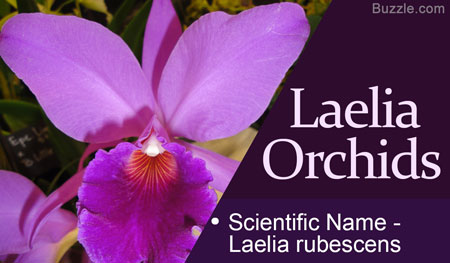
-Family- Orchidaceae
-Genus- Laelia
-Common Name- Laelia Orchids, Guarita
-Appearance- The flowers are a pale shade of pink.
-Location- Mexico, Central America
Quick Fact- This is a beautiful, fragrant flower. They are similar to the Brazilian Leilia, and are used to create hybrids for commercial purposes.
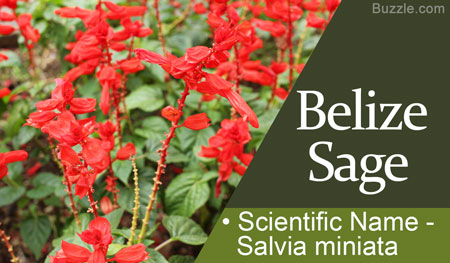
Family- Lamiaceae
-Genus- Salvia
-Common Name- Belize Sage, Misty Mountain Sage
- Appearance- The flowers are small, and reddish orange in color.
-Location- Mexico, Belize, Florida, California
Quick Fact- This is a thorough garden flower, and is cultivated commercially in many parts of the world. Due to its small size, it is a compact plant that can be grown with ease in containers.
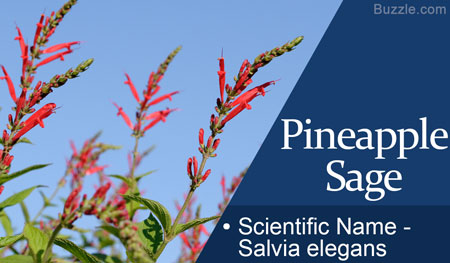
-Family- Lamiaceae
-Genus- Salvia
-Common Name- Pineapple Sage, Tangerine Sage
-Appearance- It has an attractive, striking, red color.
-Location- Mexico
Quick Fact- This flower has the scent of pineapples, and thus attracts many butterflies and birds. It is used in decoration and culinary purposes, and is also served with the leaves of the plant. It is also believed to have some anti-anxiety elements.This was a list of some of the most popular flowers that are native to Mexico. If you have noticed, some of them even have unique names, suggesting their relevance in mythology and folklore.






 Mighty!Dahlia, which is the national flower of Mexico, belongs to the Asteraceae family, which is amongst the top three largest families of flowering plants. The other two are Orchidaceae and Fabaceae.Mexico has cropped up as one of the budding flower-producing nations of the world. The land is bestowed with diverse favoring conditions that prompt the growth of multiple flowers throughout the country, facilitating floriculture as an industry. It also boasts of an exquisite flora, which is grouped as tropical, desert, and temperate flowers. Most flowers are commercially available, both, for the domestic market as well as for export. The varieties of flowers produced are multiple, which cater to the food and cosmetic industry, not forgetting the ones which are meant for ornamental decoration and gardening.
Mighty!Dahlia, which is the national flower of Mexico, belongs to the Asteraceae family, which is amongst the top three largest families of flowering plants. The other two are Orchidaceae and Fabaceae.Mexico has cropped up as one of the budding flower-producing nations of the world. The land is bestowed with diverse favoring conditions that prompt the growth of multiple flowers throughout the country, facilitating floriculture as an industry. It also boasts of an exquisite flora, which is grouped as tropical, desert, and temperate flowers. Most flowers are commercially available, both, for the domestic market as well as for export. The varieties of flowers produced are multiple, which cater to the food and cosmetic industry, not forgetting the ones which are meant for ornamental decoration and gardening.  -Family- Convolvulaceae
-Family- Convolvulaceae -Family- Passifloraceae
-Family- Passifloraceae -Family- Asteraceae
-Family- Asteraceae -Family- Apocynaceae
-Family- Apocynaceae Family- Orchidaceae
Family- Orchidaceae -Family- Lamiaceae
-Family- Lamiaceae -Family- Asteraceae
-Family- Asteraceae -Family- Euphorbiaceae
-Family- Euphorbiaceae -Family- Asteraceae
-Family- Asteraceae -Family- Asparagaceae
-Family- Asparagaceae -Family- Asteraceae, Compositae
-Family- Asteraceae, Compositae -Family- Papaveraceae
-Family- Papaveraceae -Family- Asteraceae
-Family- Asteraceae -Family- Cactaceae
-Family- Cactaceae -Family- Iridaceae
-Family- Iridaceae -Family- Asteraceae
-Family- Asteraceae -Family- Strelitziaceae
-Family- Strelitziaceae -Family- Acanthaceae
-Family- Acanthaceae -Family- Cactaceae
-Family- Cactaceae -Family- Bombacaceae
-Family- Bombacaceae -Family- Orchidaceae
-Family- Orchidaceae Family- Lamiaceae
Family- Lamiaceae -Family- Lamiaceae
-Family- Lamiaceae